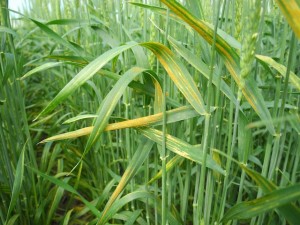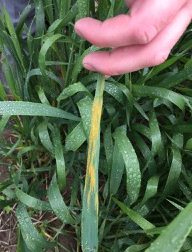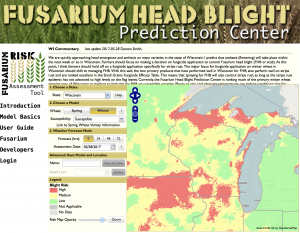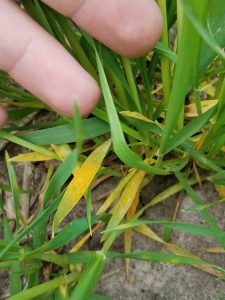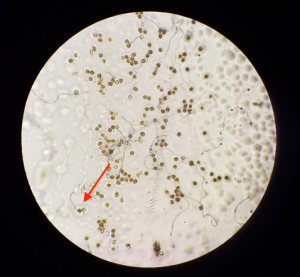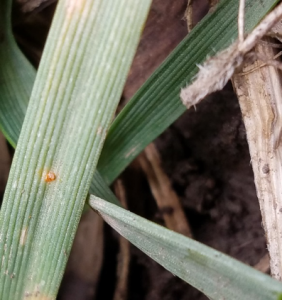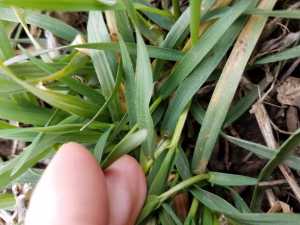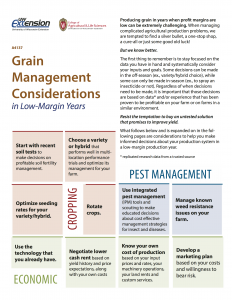Wisconsin Winter Wheat Disease Update – April 17, 2018
Damon Smith, Extension Field Crops Pathologist, Department of Plant Pathology, University of Wisconsin-Madison
Brian Mueller, Assistant Field Researcher, Department of Plant Pathology, University of Wisconsin-Madison
The Wisconsin Field Crops Pathology crew scouted the winter wheat uniform variety trials located in Sharon, Wisconsin late last week (April 12, 2018) prior to the latest snow storm. This is our most southerly location (near the IL state line), and is often a good early indicator of disease issues for Wisconsin. Wheat was trying to green up a bit, but the latest snow fall will surely set the crop back. With more snow in the forecast for April 18, 2018 it will be some time before we can scout wheat again for disease. That is the bad news. The good news is that we did not find any diseases.
With numerous reports of active stripe rust from states in the Mid-south we were concerned that early stripe rust might be present. We scouted known varieties to be susceptible, with no foliar symptoms apparent. You will remember in 2017, we identified active stripe rust very early in Wisconsin. This was due to overwintering of Puccinia striiformis inoculum from active infections that started in the fall of 2016. We suspect that warmer winter conditions in the 2016-2017 field season allowed P. striiformis to overwinter. Sharma-Poudyal et al. (2014) reported models that predict overwintering of P. striiformis when the 30-day average low temperatures are 14F or above with snow cover, or 21F or above without snow cover.
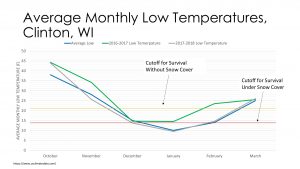
Figure 2. Average 30-day low temperatures, 2016-2017 30-day average low temperatures, and 2017-2018 30-day average low temperatures and P. striiformis survival thresholds under snow cover and without snow cover for Clinton, Wisconsin.
Using these thresholds and data from US Climate Data (https://www.usclimatedata.com/) for Clinton, Wisconsin (very close to our research site) in the 2016-2017 field season, we found that the under-snow-cover threshold was not below the 14F mark (Fig. 2). These warm conditions in 2016-2017 likely resulted in overwintering of inoculum at this location during last season. Using the same temperature thresholds and looking at 30-day average low temperatures for the 2017-2018 field season, we find that low temperatures where much more seasonable and were well below even the under-snow-cover threshold in January 2018 (Fig. 2). Thus, the risk for overwintering of P. striiformis inoculum in far southern Wisconsin is low this season. Even if active P. striiformis infections were found in fall of 2017, the likelihood it survived the winter was unlikely; especially considering the low temperatures in January of 2018 with minimal snow cover at this site during that time.
We will continue to scout winter wheat fields once snow melts. I would encourage others to get out and scout once the weather improves. Be sure to pay close attention to any winter wheat varieties that are known to be susceptible to stripe rust.
Literature cited:
Sharma-Poudyal, D., Chen, X., and Alan Rupp, R. 2014. Potential oversummering and overwintering regions for the wheat stripe rust pathogen in the contiguous United States. Int J Biometeorol. 58:987-997.




